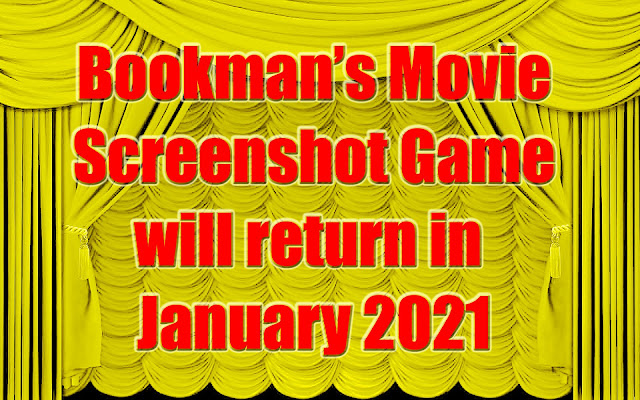 |
| Paul Newman and Robert Redford in Butch Cassidy and the Sundance Kid (1969) |
I went by myself to the Warner Theatre in Huntington Park and saw this movie on New Year's Eve 1969. I thought it was a great movie and I still do. On a Saturday about a week and a half later I convinced a friend to go with me to see it.
The Warner Theatre on Pacific Avenue was an old movie palace with about 1,800 seats. Two vomitoria provided entrance to the orchestra section, and the stairs to the balcony were in the lobby. My friend and I chose seats in the right-center orchestra section on the vomitorium just a few rows from the back.
One day earlier I was walking in front of the Huntington Park High School gymnasium, headed home from my last home basketball game, when I felt a tap-tap-tap on my shoulder. I turned around and saw a girl from my journalism class. She said, "So what's this thing between us?" A thing? I barely knew her. I shrugged my shoulders. We chatted briefly before parting. She walked back into the gym and I kept walking home.
I mention this because as my friend and I were awaiting the start of the movie, the girl came in with three other girls and walked toward the front of the seating. She and her friends sat a few rows back from the screen in the right section but also on the vomitorium. A few silent seconds passed and I said, "Let's go down there."
So we went down there and sat in the row directly in front of them, but I left the aisle seat empty. Sure enough, a few minutes later the girl came up and sat next to me. We held hands all through the double feature. And nearly 52 years later, and 48 years of marriage, we're still holding hands.
We introduced Butch Cassidy and the Sundance Kid to our two boys as soon as they were old enough. It has been a family favorite for nearly 40 years.
🌎🌎🌎
Conrad Hall was the director of photography on this film. And for his work he won the Oscar for Best Cinematography. He won 3 Oscars for Best Cinematography, the other 2 films being American Beauty (1999) and Road to Perdition (2002). Among his other credits he has filmed Harper (1965), The Professionals (1966), Cool Hand Luke (1967), In Cold Blood (1967), Electra Glide in Blue (1973), The Day of the Locust (1975), Marathon Man (1976), Searching for Bobby Fischer (1993), and A Civil Action (1998). He died in 2003.
🌎🌎🌎
Paul Newman was always on time. Robert Redford was always late. Newman insisted they rehearse. Redford disagreed, liking the spontaneity of saying the lines fresh on film. Newman had to fight to get Redford cast as The Sundance Kid. Redford had plenty of acting experience, but he was still relatively unknown. Newman was a superstar.
Director George Roy Hill was a gruff man. He knew exactly where he wanted to go with this film and he knew how to get there and he didn't take suggestions well. Newman had ideas. They were shot down. He had more ideas. They were shot down too.
Newman and Redford drank a lot of beer after work.
William Goldman's script was funny. Too funny for a western, Hill thought. Newman didn't play comedy well, and nobody knew it better than Paul Newman. Hill told him not to do comedy, just play it straight. Hill told Goldman to cut some of the funny stuff. He did. In previews, audiences still laughed too much. Goldman cut even more.
🌎🌎🌎
The Sundance Film Festival began in summer 1978 in Salt Lake City as the Utah Film Festival. (It moved to Park City and changed the dates from summer to winter in 1981. It officially changed its name to The Sundance Film Festival in 1991.) Robert Redford's involvement has always been away from the spotlight.
Over the years it has become the largest independent film festival in the U.S., featuring some of the best never-before-seen American and international independent films. Awards go to films in several categories. Winners of the various awards can be found here. They include The Times of Harvey Milk (1985); Stranger Than Paradise (1985); sex, lies & videotape (1989); Clerks (1994); Crumb (1995); Big Night (1996); Smoke Signals (1998); Secretary (2002); American Splendor (2003); Frozen River (2008); Winter's Bone (2010); and Whiplash (2014).
🌎🌎🌎
Hole in the Wall Gang Camp was founded by Paul Newman in 1988. It is a summer and fall camp and year-round service center for children aged 7-15 diagnosed with serious diseases and conditions. Their parents and caregivers are also invited. All services are provided free of charge.
Hole in the Wall Gang Camp performs outreach to hospitals and clinics throughout New England. Camp staff make regular visits to children around the northeast. The camp gets its funding from Newman's Own and from numerous organizations, including the International Longshoremen's Association Children's Fund and Newman's college fraternity, Phi Kappa Tau.
🌎🌎🌎
BAFTA stands for the British Academy of Film and Television Arts. Butch Cassidy and the Sundance Kid holds the all-time record for most BAFTA awards for a single film—9. It was nominated for 7 Oscars and won 4.
🌎🌎🌎
Gene Siskel was the new film critic for the Chicago Tribune when the movie was released. Roger Ebert was the slightly-less-new film critic for the Chicago Sun-Times. One poor sonovabitch at each newspaper—among hundreds of staff, reporters, and editors—stood against the tidal wave of adoration and reverence for Butch Cassidy and the Sundance Kid. Siskel and Ebert detested it. Their reviews almost got them fired.


































